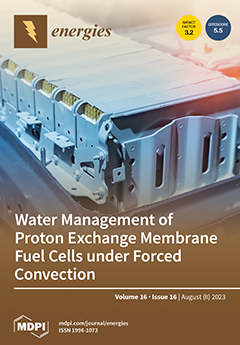Deep coalbed methane (CBM, commonly accepted as >1500 m) has enormous exploration and development potential, whereas the commercial development of deep CBM exploration areas wordwide has been quite limited. The Linxing area, with coals buried approximately 2000 m deep, shows great development potential.
[...] Read more.
Deep coalbed methane (CBM, commonly accepted as >1500 m) has enormous exploration and development potential, whereas the commercial development of deep CBM exploration areas wordwide has been quite limited. The Linxing area, with coals buried approximately 2000 m deep, shows great development potential. Based on a basic geological analysis of structural and hydrodynamic conditions, combining field tests of reservoir temperature and pressure and indoor measurements of maceral composition, proximate analysis, thermal maturity, porosity and permeability, the factors controlling deep CBM accumulations were discussed. The results show that the present burial depth of the No. 8 + 9 coal seam, mainly between 1698 and 2158 m, exhibits a high reservoir temperature (45.0–64.0 °C) and pressure (15.6–18.8 MPa), except for the uplift area caused by the Zijinshan magma event (with coal depth approximately 1000 m). The maximum vitrinite reflectance (
Ro,max) of the coal varies from 1.06% to 1.47%, while the magma-influenced areas reach 3.58% with a relatively high ash content of 31.3% (air-dry basis). The gas content calculated by field desorption tests shows a wide range from 7.18 to 21.64 m
3/t. The key factors controlling methane accumulation are concluded from regional geological condition variations. The north area is mainly controlled by structural conditions and the high gas content area located in the syncline zones. The center area is dominated by the Zijinshan magma, with relatively high thermal maturity and a high gas content of as much as 14.5 m
3/t. The south area is developed with gentle structural variations, and the gas content is mainly influenced by the regional faults. Furthermore, the groundwater activity in the eastern section is stronger than that in the west, and the hydrodynamic stagnant areas in the western are more beneficial for gas accumulation. The coals vary from 3.35% to 6.50% in porosity and 0.08 to 5.70 mD in permeability; thus, hydrofracturing considering high temperature and pressure should be applied carefully in future reservoir engineering, and the co-production of gas from adjacent tight sandstones also should be evaluated.
Full article
 to open them.
to open them.




